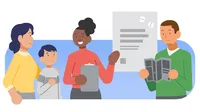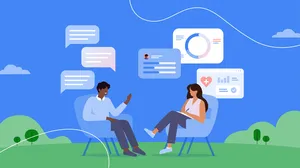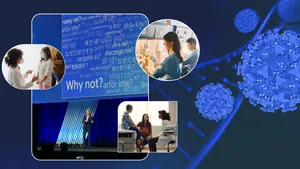Raising awareness of the dangers of fentanyl

Editor’s note:
Illegally made fentanyl — a dangerous synthetic opioid — is driving the recent increase in all U.S. overdose deaths, with young people being the most vulnerable. Overdose deaths among teenagers linked to synthetic opioids like fentanyl have tripled in recent years, as illegal fake pills containing the deadly drug are sold on the street and online. Sadly, many young people who lose their lives to overdose are unaware of the dangers of fake prescription pills that contain fentanyl.
Google continues to promote addiction awareness and highlight recovery support services for those affected. For example, for the past four years Google has worked with the U.S. Drug Enforcement Administration (DEA) to promote their twice-yearly National Prescription Drug Takeback Day; this includes mapping their collection site locations on the Recover Together website, a site that also shows a Google Maps locator tool with pharmacies where you can get naloxone, a medication designed to rapidly reverse opioid overdose. Google shows the Substance Abuse and Mental Health Services Administration (SAMHSA) hotline to people looking for help addressing substance use and surfaces the Partnership to End Addiction helpline to connect caregivers of those struggling with substance use with support resources.
In observance of National Fentanyl Awareness Day on May 10, 2022, we asked two Google Health experts — Dr. Megan Jones Bell, Clinical Director of Consumer and Mental Health at Google, and Dr. Garth Graham, Director and Global Head of YouTube Health — to share their thoughts on addressing the deadly epidemic of fentanyl overdoses.
Throughout our careers, we’ve seen the impact that opioids and related substances can have on individuals, families and communities. Over the last two years, these public health issues have been eclipsed by the COVID-19 crisis. As we find ourselves in a new stage of the pandemic, we are facing an equally terrifying national health crisis: fentanyl use.
What is fentanyl and why is it so dangerous?
Fentanyl is a potent, lab-made opioid and a cheap and addictive filler that gets added to illegal, counterfeit versions of well-known prescription opioid and anti-anxiety drugs (as explained by the DEA’s One Pill Can Kill website), as well as other illegal drugs like heroin and cocaine. The DEA warns that fentanyl substantially increases the chances of a fatal interaction when added to any of these drugs. The rise of fentanyl in the U.S. has contributed to a recent 33% increase in accidental deaths in people 50 and younger.
The DEA reports that one in four counterfeit pills made with fentanyl contains a lethal dose. Among the scariest aspects of fentanyl are how easy it is to acquire and that a single pill is often all it takes to end a life. And it can happen to anyone. Two Google parents who lost their sons this way shared their tragic experiences in a blog post last year about the dangers of accidental fentanyl overdose.
Teens are particularly vulnerable to misleading and false information about the substances that they acquire. Many young people whose lives are lost to fentanyl overdose are not regular drug users. Having honest conversations can save lives: If you’re a parent, guardian or other adult responsible for a young person, please talk to them about the dangers of fentanyl and counterfeit pills. These resources can help to guide your conversations about fentanyl.
Understanding the impact of fentanyl
In the U.S. in 2019, overdose deaths involving synthetic opioids like fentanyl were nearly 12 times higher than six years prior. During the COVID-19 pandemic, this disturbing trend became markedly worse. Between January 2020 and January 2021, overdose deaths involving synthetic opioids (primarily fentanyl) rose over 50 percent, and these drugs are likely the main driver of the increase in total drug overdose deaths. In fact, 207 people die every single day from an opioid-related overdose with fentanyl being a factor in more than half of overdose deaths.
Despite these staggering statistics, awareness of fentanyl-laced, counterfeit pills and other substances is remarkably low. As clinicians and parents, we must ensure that everyone – especially teens, young adults and their parents and guardians – understand the risks and prevalence of fentanyl and how to prevent, recognize and reverse overdoses.
Resources for fentanyl education and awareness
For National Fentanyl Awareness Day, Google and YouTube are working together to share resources on Google’s Recover Together site to take a first step toward improving fentanyl education and awareness. We are committed to raising awareness of substance use disorders and the dangers associated with fentanyl and other opioids.
In addition to highlighting resources on fentanyl education, we are also increasing awareness of a new crisis affecting many U.S. communities: fentanyl mass-overdose events. The DEA defines these horrifying overdose clusters as “three or more overdoses occurring close in time and at the same location.”
Fentanyl has permanently altered the course of so many people’s lives, leaving devastated families and communities in its wake. Please join us in taking action to end our nation’s opioid epidemic and to protect our families, friends and communities from the scourge of fentanyl.
Here’s what you can do:
- Educate your loved ones and spread awareness throughout your community on the dangers and prevalence of fentanyl. The National Fentanyl Awareness Day site has important facts and figures in shareable graphics.
- Carry and learn how to administer naloxone, as recommended by the US Surgeon General. Many recovery community organizations provide local training, or you can take online courses through organizations like the Red Cross.
- Learn to recognize the signs of overdose and be prepared to call for help.
- Verify your online pharmacy before purchasing prescription drugs.
- Use rapid test strips to determine if drugs are mixed or cut with fentanyl. With the CDC’s help, many states and communities have programs to make these test strips available. You should use these programs to always test any drugs before use.
Together, we can promote greater awareness of the dangers of fentanyl and help turn the tide on a deadly epidemic that has ended far too many lives far too soon.
Megan Jones Bell, PsyD. Clinical Director of Consumer and Mental Health at Google, is a clinical psychologist and digital health leader working to make healthcare more effective, affordable and accessible globally. She has done extensive research on prevention and treatment of mental health disorders and works to ensure that Google users have access to accurate and useful information about substance use disorders and the opioid epidemic.
Garth Graham, MD, MPH, FACC. Director and Global Head of YouTube Health is a cardiologist, academic and health professional who has served as U.S. Deputy Assistant Secretary for Health in two administrations. He works to bring authoritative health information to YouTube users around the globe when they search for information and resources on health conditions, including how to cope with substance addiction conditions. Dr. Graham also sits on the advisory board for National Fentanyl Awareness Day.








